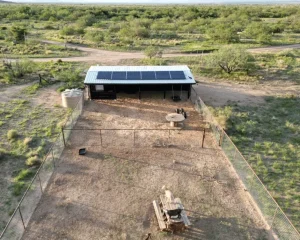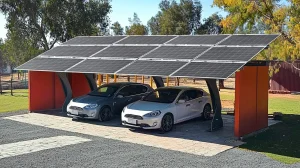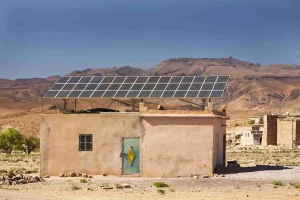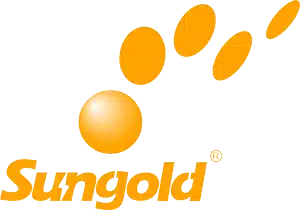When we think of solar lights, we picture sunny days, clear skies, and endless light charging naturally throughout the day. But what happens when the clouds roll in, or when winter sets in with only a few hours of sunlight? Can solar lights still function—and more importantly, can you charge them without the sun?
As a company working closely with off-grid and outdoor solar users—from campers and RV travelers to backyard lighting enthusiasts—we often get this exact question. And the answer might surprise you.
In this guide, I’ll walk you through practical, real-world methods for charging your solar lights when direct sunlight isn’t available. Whether you’re facing a cloudy week or simply want to extend your lighting options indoors, you’ll find useful solutions here that you can implement immediately.
Understanding the Challenge: What Happens Without Sunlight?
Solar lights operate using photovoltaic (PV) cells that absorb sunlight and convert it into electricity stored in a battery. When sunlight isn’t available—whether due to cloud cover, seasonal limitations, or indoor use—charging efficiency drops significantly. However, it doesn’t drop to zero.
What many people don’t realize is that solar panels can still generate electricity from ambient light, including indirect sunlight, artificial lights, and even reflected light from nearby surfaces. The results may not be as strong as full sun exposure, but they’re often sufficient for basic nighttime illumination.
Shade Doesn’t Mean Shutdown: Charging in Low-Light Conditions
Let’s start with the most common misconception: “If it’s cloudy or shaded, my solar lights won’t work.”
Not true.
While performance may dip, solar lights can still charge in the shade or on cloudy days. This is especially the case if you’re using high-efficiency monocrystalline panels, like those found in Sungold’s flexible solar panels, which are designed to perform even under diffuse light.
If your garden is under trees, or your RV is parked next to a building, your panels are still likely gathering enough light for slow charging—just be patient. Optimizing the tilt angle and ensuring the panel is clean can significantly help.
Artificial Lighting: A Surprisingly Effective Backup
Yes, you can charge solar lights using indoor or artificial lighting. It’s not a myth—it works, although it’s slower and less efficient.
Here’s how to do it:
- Use LED bulbs or incandescent lamps placed close (within 20–50 cm) to the solar panel surface.
- Keep the light focused on the panel for 6 to 12 hours depending on the bulb’s intensity.
- Check the light’s charge indicator (if available) to monitor charging progress.
This method is especially useful during long winters, or if you want to keep lights powered in an emergency without relying on outdoor conditions.
For those of you using solar lights in balconies or windowsills, indoor lighting at night can serve as a top-up to extend battery life.
Can a Flashlight Really Charge Solar Lights? Yes—But…
We’ve seen this trick mentioned in forums and even YouTube tutorials: using a flashlight to charge your solar light. In practice, this can work—but don’t expect a miracle.
A high-lumen flashlight (1000 lumens or more) can stimulate the solar panel enough to trigger charging, especially if held close and steadily for an extended time. This is more of a last-resort or experimental option, and not ideal for consistent use.
That said, it’s a neat trick for testing if your panel is functional or for briefly boosting battery life in an emergency.
Charging Solar Lights Indoors: Step-by-Step
Here’s a simple method you can try today if you want to charge your solar lights inside:
- Choose a high-intensity light source, such as a desk lamp with a bright LED bulb or a 60W+ incandescent bulb.
- Position the solar panel close to the light, ideally within 30 cm.
- Make sure the light is shining directly on the panel and leave it on for several hours.
- Check for indicators, such as blinking lights or battery level indicators (if your device has them).
- Test the output by turning the solar light on after a few hours to see how much charge was gained.
It’s not the most efficient charging method, but it does work—and it’s great for supplementing during low-sunlight seasons.
Do Solar Panels Work Without Direct Sunlight?
The short answer is yes. Direct sunlight results in peak efficiency, but solar panels don’t require it to function. Indirect light, ambient daylight, and even moonlight can generate small amounts of electricity.
Monocrystalline panels—used in many of Sungold’s products—perform better in cloudy and low-light environments than older technologies like polycrystalline. Some modern solar panels are even designed specifically for regions with frequent overcast weather.
For a deeper technical breakdown, the U.S. Department of Energy has helpful resources on how PV cells react under different lighting conditions.
Pro Tips to Maximize Charging in Low-Light
- Keep your solar panels clean. Dirt, dust, or snow can reduce energy absorption by up to 25%.
- Use reflective surfaces around your solar lights to increase indirect light exposure.
- Angle your solar panel correctly, especially during the winter when the sun is lower in the sky.
- If you rely heavily on solar lighting, consider upgrading to a model with USB backup charging for peace of mind.
Frequently Asked Questions
Q1: Can solar lights charge during rain or snow?
Yes, they can still absorb diffuse light, though charge times will be much longer.
Q2: Is it safe to use indoor lighting to charge solar lights?
Absolutely. Just keep the bulbs at a safe distance to avoid overheating the panel surface.
Q3: How long does it take to charge solar lights indoors?
It depends on the bulb’s intensity, but most will require at least 8 hours for a partial charge.
Q4: Can I use a power bank to charge solar lights?
Only if your lights have a USB or DC input port—many newer models do.
Q5: Do solar lights store unused charge?
Yes. They charge a battery, which stores energy for nighttime use, typically discharging within one cycle unless specified otherwise.
Q6: Are some solar panels better for shade or cloudy areas?
Yes. Monocrystalline and flexible thin-film panels are better optimized for weak or indirect light than cheaper polycrystalline versions.
Final Thoughts: When the Sun Hides, You Don’t Have To
Just because the sun isn’t shining doesn’t mean your solar lights need to go dark. Whether you’re facing seasonal shifts or living in a shaded area, there are multiple ways to keep your lights powered—from indoor lighting setups to smart positioning techniques.
For anyone living off-grid, RVing full-time, or simply looking to make their outdoor lighting more reliable year-round, it’s worth considering solar lights designed with low-light efficiency in mind. These solutions aren’t just workarounds—they’re part of a smarter solar strategy.








